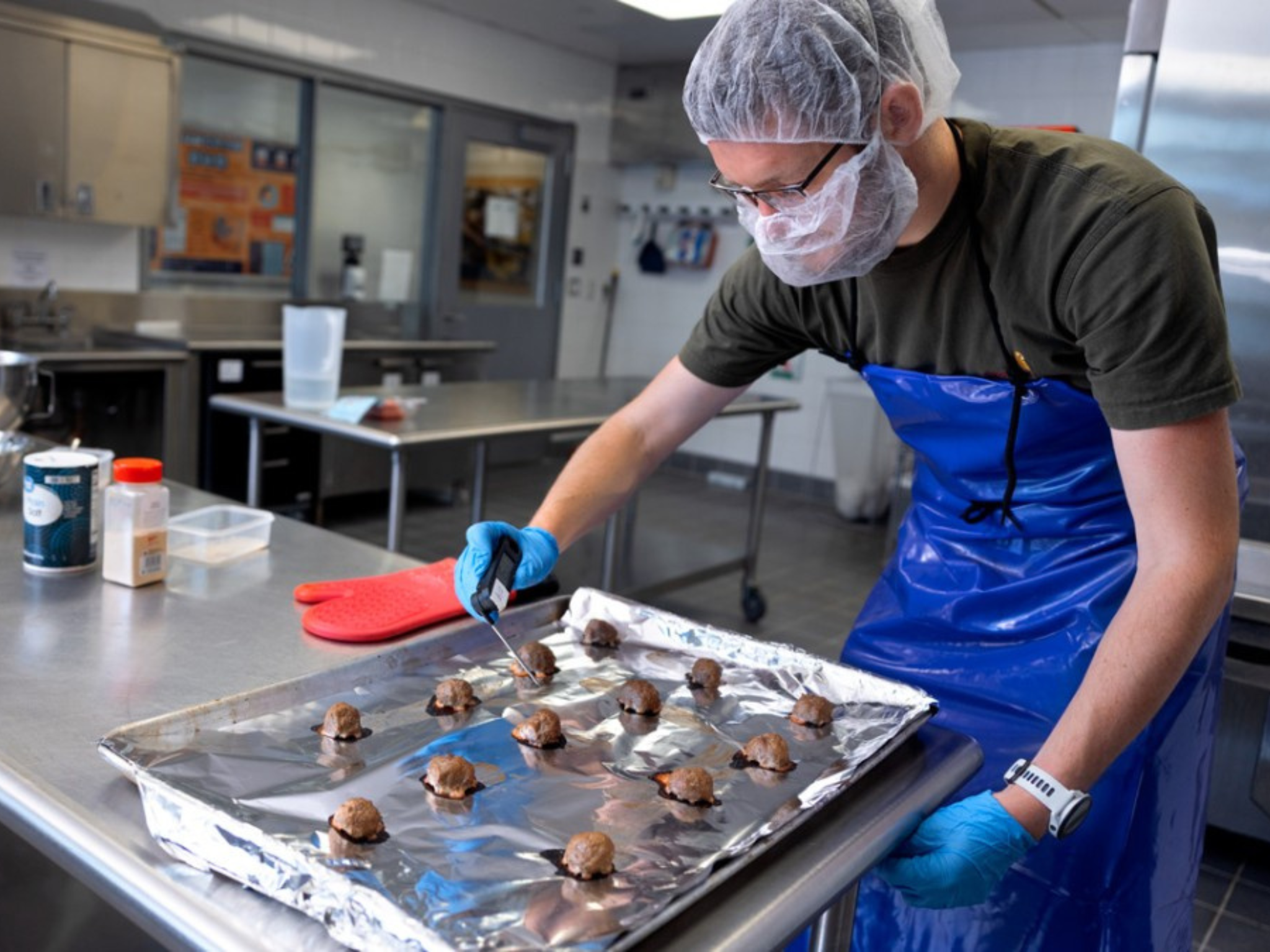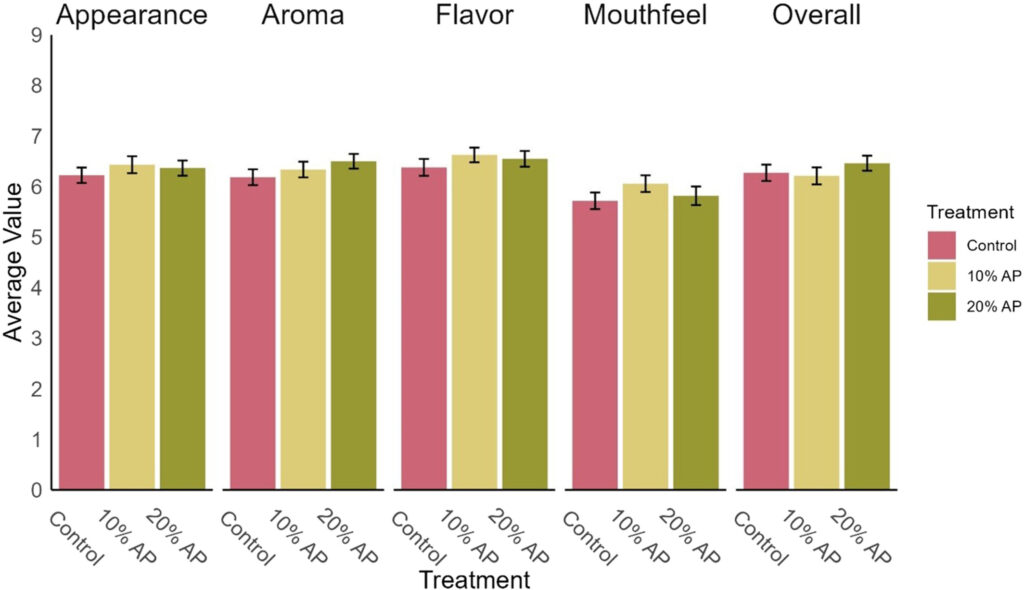
Food waste and meat consumption are major drivers of the climate crisis. But a blended meat approach could provide a win-win solution.
What do apples, TikTok and waste have in common?
According to researchers at Cornell University, they could help you eat less meat. In a study published in the Journal of Food Science and Nutrition, they have proposed a way to repurpose the waste left by the apple industry into a meatball enhancer that lowers beef content and keeps social media’s fibremaxxers happy.
Animal agriculture accounts for up to a fifth of all global emissions, while food waste is responsible for as much as 10%, so this approach could help lower consumption emissions. Reducing one’s intake of red meat – high in saturated fat and cholesterol – and adding fibre can reduce cardiovascular risk and boost gut wellness. And replacing beef content with a food industry byproduct will help lower the cost of meatballs.
“It’s a win-win-win,” said Elad Tako, associate food science professor at Cornell’s College of Agriculture and Life Sciences. “It could mean more natural, better-for-you products for meat companies and the people who care about getting enough protein and other nutrients, but also provide a new income stream for apple and cider producers.”
Meatballs blended with apple waste no different from 100% meat

When apples are pressed into cider or juice, only about 70-75% of the fruit is used. The rest – comprising the skins, seeds, core and pulp – is collectively called pomace, and its recovery rate is low. Most of this goes either to animal feed, compost or landfill.
These byproducts are rich in dietary fibre, antioxidants, and micronutrients so the team at Cornell sought to find a way to save the millions of tonnes of apple pomace produced every year.
They bought three kinds of apples at wholesale, pressed them in a commercial juice press, and freeze-dried the leftovers for 48 hours. They then milled the dried material into a powder with uniform particle size, before rehydrating and blending it into ground beef at 10% and 20% inclusion rates.
These were then fed to a sensory panel of over 100 untrained testers, which revealed that the meatballs with apple pomace were indistinguishable in aroma, taste, texture and overall preference from 100% beef versions.
Beyond the sensory attributes, the researchers found that the 20% meatballs exhibited a decline in cooking yields and a shift in internal colour, which may matter to manufacturers who need to meet specification standards. For the taste-testers, there was no cause for concern at the higher inclusion level, indicating that consumers may accept small changes if the product is otherwise familiar.
“It’s a great source of fibre and bioactives,” Tako said of apple pomace. “But as an ingredient, it also has an antioxidant effect and contributes to a longer shelf life for food products.”
Indeed, chemical analysis showed that there were polyphenols and fibre present in the apple pomace. However, the protein content was reduced slightly, and the study said further research to investigate how this would affect perceptions of blended meat is warranted.
That said, Americans already overconsume protein, and are vastly deficient in fibre – only 5% of adults meet the daily requirement of fibre intake (25g for women and 38g for men), with the average person consuming half the recommended amount. This is another reason why fibremaxxing has exploded on TikTok – a trend this approach could neatly fit into.
Blended meat approach can fill fibre gap and create revenue stream

The researchers noted how global apple production surpassed 97 million metric tonnes in 2023, leaving behind a volume of mass that’s expensive to handle. Transportation and disposal costs can eat into already tight margins, especially for smaller processors.
So turning pomace into a dry, shelf-stable ingredient could mean less waste-hauling and a marketable ingredient. Regional apple and cider producers could sell it as a value-added product to meatpackers, snack food manufacturers, or specialty food producers, opening up a new revenue stream and enabling a closed-loop manufacturing system.
In terms of benefits for livestock producers, apple pomace adds pectin, fibre, polyphenols and micronutrients to meat. Adding fruit-derived fibre could close the fibre consumption gap through popular processed foods and modestly reduce the share of animal protein without altering the eating experience or asking consumers to change their habits.
The researchers added that this blended meat approach could be useful in schools, hospitals and workplaces, where familiar comfort foods are served at scale. Plus, it could reduce methane emissions from both landfills and beef consumption.
The exact size of the potential market depends on a range of issues, including the quantity of pomace that can be dried, the pace at which producers can supply it, and whether food manufacturers will invest in reformulation and labelling changes. Freeze-drying is also energy-intensive and requires capital equipment or third-party services.
The study comes amid a rise in consumer interest in blended meat. Sensory testing shows that some of these ‘balanced protein’ products score higher than 100% meat amid omnivores. These products have been launched at Disneyland, found success on Shark Tank, and even appeared in kids’ meals.
In October, Central Market began carrying five meat products blended with shiitake mushrooms from Fable Food Co, with promising early results – one in two people who sampled the innovations have bought them on the spot.
Blended meats are very much here to stay. If we can curb waste and create revenue for local processors at the same time, that’s an important bonus. Apples aren’t the only fruits that could be valuable for the protein transition – in South Korea, one startup is creating animal-free dairy proteins by fermenting a yeast strain derived from locally grown grapes.
The post This Study Shows How Apple Waste Can Help You Eat Less Meat appeared first on Green Queen.
This post was originally published on Green Queen.